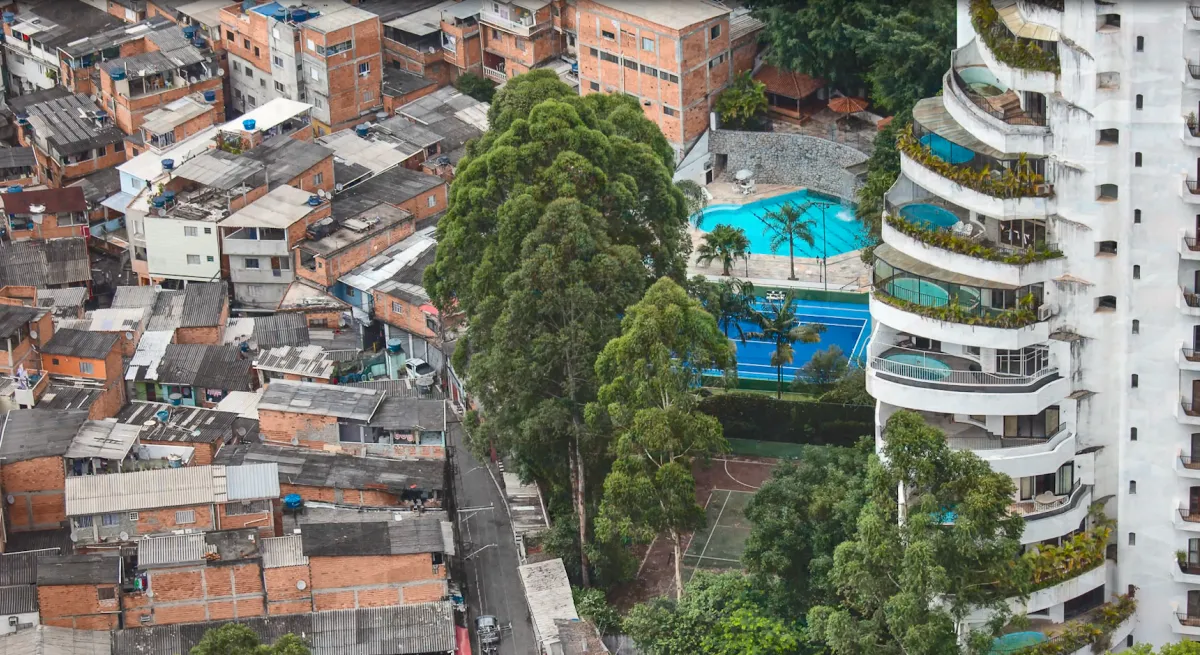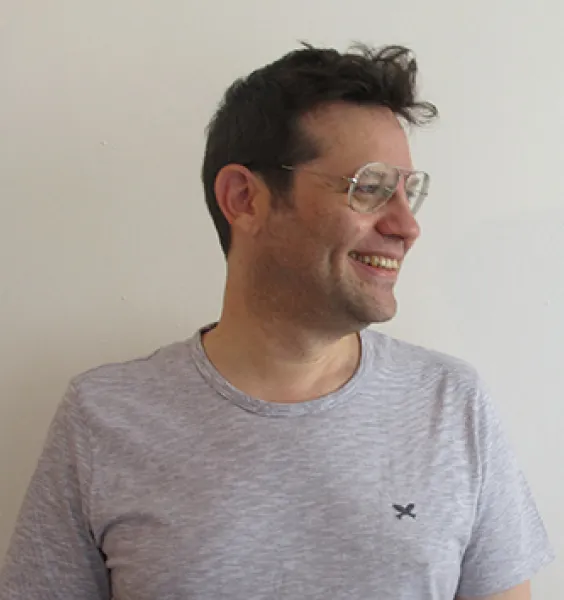
Gentrification in Brazil’s major cities is making a live-in dignity nearly impossible for low-income families. The São Paulo based organization FICA is introducing the concept of social landownership – in Brazil still unestablished – to counter the nation’s increasing wealth divide. Renato Cymbalista, who is FICA Director and one of the founders, explains why it is in the upper-class’ best interest to provide affordable housing for lower-income people and how it can be done
Dear Renato, as a Brazilian living in São Paulo, can you tell us what examples of wealth inequality you encounter when you leave your house?
I think many of us witness wealth inequality even before they leave their house. In Brazil, if you belong to a certain elite, it’s common to have a domestic servant who cleans your place and prepares your breakfast. 10% of domestic services in the world are provided in Brazil. It is a very typical occupation of dark-skinned, poor Brazilian women. Much of the life that the upper-middle and upper class enjoy is based on the domestic services that the lower income class provides.
When you go to restaurants you can see people working as waiters who could not afford to eat in those restaurants themselves. You see many people just sitting around in the streets. Wealth inequality is really visible everywhere. To me, the absurdity of the divide becomes apparent each time I see small children, two three years of age, starting to notice people in the streets and being totally shocked: «Mom, don’t they have a house? Where do they go to the bathroom? Do they go to school?»
How is affordable housing a key factor to reducing the wealth gap?
I’ll give you a very recent example: I teach at the university of São Paulo. During the pandemic we had to move all our classes online. I missed the real classroom presence very much. When I asked my students how they felt about virtual classes, the privileged ones didn’t really like them either. However, some of the underprivileged LOVED virtual classes as it spared them the commute of three to four hours each day. Affordable housing in central areas allows access to better public schools, cultural centers, libraries, parks and much more – it’s access to important opportunities for economic and social development. With that comes also a more diverse social network which increases social mobility. A reasonable rent on a permanent basis allows the families to redirect finances, save money and provide education for the offspring.
Sadly, the prices in central areas are surging drastically due to the speculative real estate market. Low-income families unable to put down a deposit or show the required bank guarantees have to resort to the informal housing market. Legally unprotected, they are subject to extortive housing situations. In so-called let-and-sublet situations, a tenant of an apartment sublets it unofficially to multiple families, each at a horrendous price. Usually it’s one family per room, all with a shared bathroom. The buildings – so-called ‘cortiços’ – are often in a derelict state, the market is highly criminal, and the extorted families end up paying a higher rent per square-meter than the middle- and upper class do in the formal market.
In São Paulo, and in Brazilian big cities, the poorer you are, the more you pay with rent
How does FICA address this housing crisis?
FICA is an Non Profit Organization created in 2015. It all started very intuitively. We knew we wanted to address gentrification. The strategy that we developed is to acquire extortive or potentially extortive real estate and repurpose it into affordable housing at cost price, which is at about 40% of the market price. We started through crowdfunding and donations, which are still a source and an opportunity to contribute to the project. We always look for real estate that is centrally located and near an underground or metro station. Also, the housing costs must be low, so tenants can afford to pay the rent by themselves. We want to be a provider of affordable housing and not of subsidized living.
To onboard individuals, families or institutions that want to invest in or provide affordable real estate, we have been developing an ‘impact investment’ mechanism: Instead of let’s say yearly 6% return on investment the investors settle for 3-4%, knowing that their real estate investment creates social impact.
Gentrification
is a process of neighborhood change that includes economic change in a historically disinvested neighborhood —by means of real estate investment and new higher-income residents moving in - as well as demographic change - not only in terms of income level, but also in terms of changes in the education level or racial make-up of residents. Often, the process ends up making housing and lifestyle in the neighborhood not affordable for low-income households who used to live in the area1.
Why would someone want to invest into FICA housing?
In general, more and more wealthy Brazilians are getting uncomfortable with the social inequality in their country. Younger generations are more sensitive to the unequal wealth their family holds and criticize their parents for being blind to inequalities. For many, material wealth is not fulfilling the need of a purposeful existence. Investing a small part of their wealth into a transparent social impact project can help fill this gap.
We also have landowners who want to bring their own real estate under the FICA model. Freeing yourself from the administrative obligations is a common motivation for them. Owning a real estate can be a burden. It could be illegally occupied, you need to find tenants, you are vulnerable to middlemen and crime, there’s maintenance and not to forget taxes. In these cases, it is an attractive option to sell the house to FICA; at a lower price, knowing that it will be maintained properly and benefit families in need.
Another motivation is social recognition. People want to leave behind a legacy. Our first multi-level building was sold to us by an entrepreneur who started out poor in Brazil and made himself a great fortune. He was already selling the building to us below the lowest bidding price, but we aimed to get an even fairer price. We offered him to have his family story incorporated into the renovated building, and he sold us the building at a very very fair price.
Besides purchasing and owning real estate, FICA is now also exploring the option of tenancy management to tackle the informal let-and-sublet market. This market is very non-transparent and hard to oversee. Tenants just start to sublet and, with time, it becomes a hard to oversee mess of extortion. Many owners have had very bad experiences in this regard. In such cases, FICA can create transparency. We renovate the building, keep clear records of the families living there and create opportunities for owners and tenants to get to know each other. This turns a suspicious let-and-sublet situation into a transparent social housing model. Many real estate owners also deeply appreciate getting to know these families in need. It’s an inspiring experience for both as they realize that people from different economic backgrounds are not so different after all.

What has FICA achieved so far?
Since our foundation in 2015 we have repurposed four real estates. The first one is an apartment gifted by an investor. Since 2019, a family with three children, age three to ten, has been living there. The effect on the family was immediate and multidimensional. We keep measuring the effect in qualitative interviews for our research. The second apartment was purchased and financed exclusively through crowdfunding. Renovations are in progress and the selection process for a family of four to five people has started.
In our partnership project with the Julius Baer Foundation we have now been working to support the scalability of the FICA model. We have set legal, building management and economic models for social impact investments. The results are two upscalable models, one for social investment/purchase and the other for tenancy management.
House Jaraguá is our first multi-unit real estate. It was bought in the frame of the Julius Baer Foundation’s project and it enabled us to upscale from single apartments to multi-unit buildings. Three families, probably single mothers with child, will live together in that house. With the help of high-profile designers specialized in small spaces, we are currently transforming the house into a desirable living space for the families.
House Lameirão is our pilot project in tenancy management. We are renting the house and subletting it to three families. A first family of four is already living in there. We moved the family during the pandemic from a very precarious and dangerous cortiço. The family had been extorted by the subletter with death threats. The son had developed mental health issues due to the living circumstances. We have arranged psychological support from a volunteer and the boy improved within the first weeks just due to the better housing situation.
What are your plans for the future?
We started 2021 assigning one family into their new home, and we hope to finish the year with eight families. We started out wanting to develop the concept of social property in Brazil – and we did it. Now, we want to upscale and show that this works. We hope we can inspire other groups in civil society and in the municipal administration to copy our model or relate to it.
If we have social housing for 50 families by 2030 and become a trusted model for the state to use as a basis for their future housing policy, I will be very proud.

Renato Cymbalista is an architect and planner.
A professor at the School of Architecture and Urbanism of the University of São Paulo, Renato Cymbalista is also a director and one of the founders of FICA, established in 2015. From 2012 to 2021 he was the president of Instituto Pólis, a São Paulo Based NGO and he sits on the board of Fundo Agroecológico and Frente Alimenta. Renato has curated the FICA pavillion for the Chicago Architecture Biennial and has edited, among other titles "What does an ethical Landlord Look Like" (FICA/ Anna Blume Editions) and "Acesso à terra para a agricultura justa" (FICA/Pistache Editorial).
